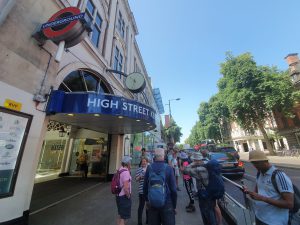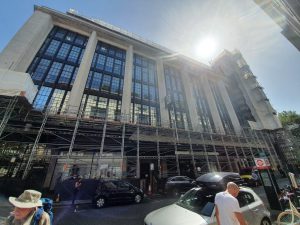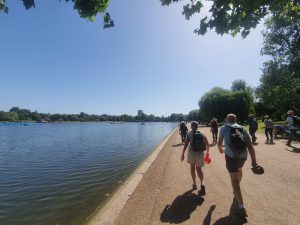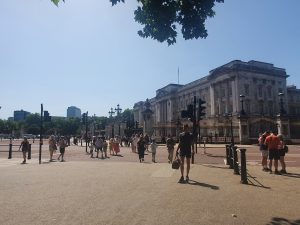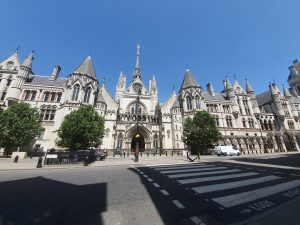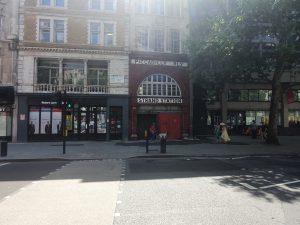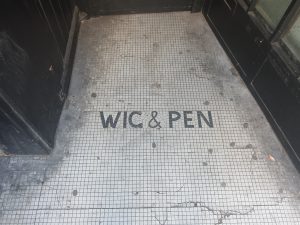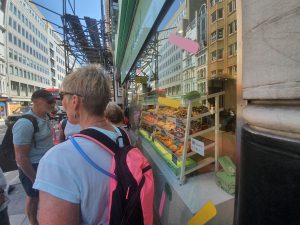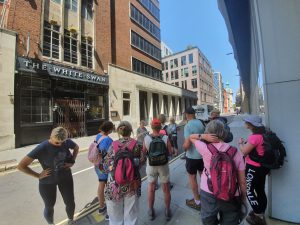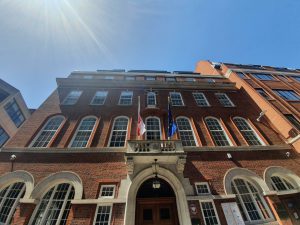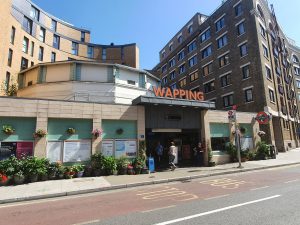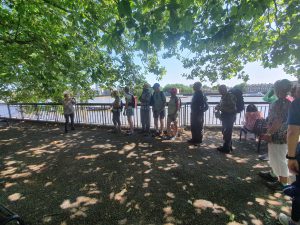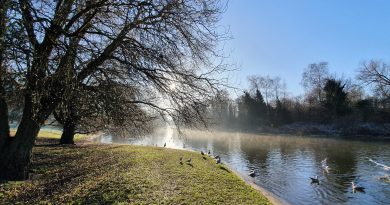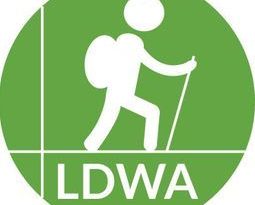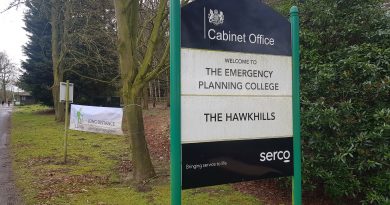LDWA – Fleet Street History Walk
This is the first walk I’ve been on that was listed in the new national LDWA history group and although it went from Kensington High Street to Canary Wharf, it was centred on the Fleet Street theme. The walk was led by Dame Julie Welch who worked in Fleet Street as, amongst other things, a sports journalist. She has written a book about women in Fleet Street, which is well worth a look and I’ve linked to it at the bottom of this post. There were fifteen or so people on the walk and it was interesting to meet LDWA members from other parts of the country.
The walk started outside High Street Kensington underground station.
This is Northcliffe House in Kensington, current home of the Daily Mail.
It’s fair to say that the weather was hot and there were plenty of people in Kensington Gardens and Hyde Park. We bravely kept up quite a pace to cross the park.
Buckingham Palace.
The Royal Courts of Justice, which are on the Strand, which is at the end of Fleet Street. Incidentally Fleet Street is named after the river, a walk I went on a few weeks ago led by Des.
The former Strand underground station, which closed in 1994 as usage was low and the cost of repairing the lifts would have been too expensive. It’s today used for filming and there’s an underground train down there which can be used if required. There’s a connection to the Piccadilly line should there ever be a need to bring the station back into usage, although that’s not very likely.
The former Wig & Pen club, more about this at https://www.theguardian.com/media/2003/nov/29/pressandpublishing.uknews.
It was interesting to hear about what Fleet Street was like in the 1970s and 1980s. A male dominated environment where drinking and smoking was commonplace, but Julie also explained just how vibrant and exciting a place it was to be. They would hear the news first and it felt like a separate town within London, with the clattering of the print presses and the smell of printers ink in the air. I must admit, it sounds a working environment that must have been challenging (especially for women), but endlessly exciting.
One of the locations that Julie showed us was El Vino (more at https://en.wikipedia.org/wiki/El_Vino) which for a long time required men to wear ties and didn’t allow women to order at the bar. This was only overturned in 1982 when the matter went to court, with the bar fighting hard to maintain their right not to serve women. There was work going on at El Vino, so no photo of the frontage, but instead I took a photo of the tempting doughnuts in the shop next door.
We had time for a drink at Black Friar pub which is located at the end of Fleet Street and Julie pointed out some other pubs that I’ll visit on Fleet Street during the week. Many of them are now closed on the weekends, but back in the day when Fleet Street was in its prime, they’d be open every day.
Julie mentioned that every newspaper would have its own pub where journalists and workers would go. It was possible for anyone to go to any pub, but people just tended to stick with the pub that their newspaper most commonly used. Above is the White Swan (also known as the Mucky Duck) on Fetter Lane, just behind Fleet Street, which I think Julie said was used by the Daily Mirror.
Nothing to do with the walk itself, I just liked the Poland Consulate building with its Polish and EU flags when walking by.
I left the walk at Wapping as I had to go and have my second jab at Guy’s Hospital (I was very brave), but Julie led the others on to Canary Wharf. Wapping was an essential part of the walk as the opening of the printing presses there by Murdoch in the 1980s saw an effective end to Fleet Street as the heart of the newspaper industry in London.
A few minutes before a group photo was taken. Thanks again to Julie for leading this walk, something very different.
Julie hopes to lead the walk again, so look out for it in the LDWA history group and LDWA London programmes. Julie also wrote the book below which was published by Trapeze last year.


